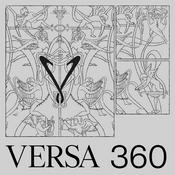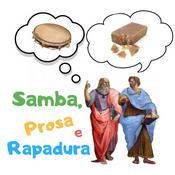237 episódios

marginalia
05/1/2026 | 2min
Merriam-Webster's Word of the Day for January 5, 2026 is: marginalia • \mahr-juh-NAY-lee-uh\ • noun Marginalia is a plural noun that refers to notes or other marks written in the margins of a text, and also to nonessential matters or items. // I loved flipping through my literature textbooks to find the marginalia left behind by former students. // She found the documentary's treatment of not only the major events but also the marginalia of Scandinavian history fascinating. See the entry > Examples: “Marginalia have a long history: Leonardo da Vinci famously scribbled thoughts about gravity years before Galileo Galilei published his magnum opus on the subject; the discovery was waiting under our noses in the margins of Leonardo’s Codex Arundel.” — Brianne Kane, Scientific American, 19 Sept. 2025 Did you know? In the introduction to his essay titled “Marginalia,” Edgar Allan Poe wrote: “In getting my books, I have always been solicitous of an ample margin; this not so much through any love of the thing in itself, however agreeable, as for the facility it affords me of penciling suggested thoughts, agreements and differences of opinion, or brief critical comments in general.” At the time the essay was first published in 1844, marginalia was only a few decades old despite describing something—notes in the margin of a text—that had existed for centuries. An older word, apostille (or apostil), refers to a single annotation made in a margin, but that word is rarely used today. Even if you are not, like Poe, simply ravenous for scribbling in your own books, you likely know marginalia as a telltale sign that someone has read a particular volume before you.

titanic
04/1/2026 | 2min
Merriam-Webster's Word of the Day for January 4, 2026 is: titanic • \tye-TAN-ik\ • adjective Something described as titanic is very great in size, force, or power. // The batter saved the game in the bottom of the ninth inning by hitting a titanic home run right out of the park. See the entry > Examples: “Absurdly, though, if you were standing on a Rodinian beach [on the ancient supercontinent of Rodinia] you might not have even noticed the seas rising at all. This is because, as the land bounced back from underneath the weight of the now-vanished ice sheets, and the gravitational pull of these titanic ice sheets on the oceans disappeared, the seas might have appeared to some Rodinian beachgoers to instead retreat from the coast, and even drop by over three hundred feet—despite the unthinkable rise in sea level globally.” — Peter Brannan, The Story of CO2 Is the Story of Everything: How Carbon Dioxide Made Our World, 2025 Did you know? Before becoming the name of the most famous ship in history, titanic described that which resembled or was related to the Titans, the family of giant gods and goddesses in Greek mythology who were believed to have once ruled the earth. They were subsequently overpowered and replaced by the younger Olympian gods under the leadership of Zeus. The size and power of the Titans is memorialized in the adjective titanic and in the noun titanium, a chemical element of exceptional strength that is used especially in the production of steel.

senescence
03/1/2026 | 1min
Merriam-Webster's Word of the Day for January 3, 2026 is: senescence • \sih-NESS-unss\ • noun Senescence is a formal and technical word that refers to the state of being old or the process of becoming old. // Our grandparents, now in their senescence, are enjoying spending more time with family and going on new adventures together. See the entry > Examples: “Pilates provides improvements in core strength, flexibility and balance, even when done just once a week. It can help with stress relief, as well as anxiety and depression. Among those 60 years of age and older, Pilates has even been shown to slow the process of senescence.” — Leah Asmelash, CNN, 7 Sept. 2025 Did you know? Senescence can be traced back to Latin senex, meaning “old.” Can you guess which other English words come from senex? Senile might (correctly) come to mind, as well as senior. But another one might surprise you: senate. This word for a legislative assembly dates back to ancient Rome, where the Senatus was originally a council of elders composed of the heads of patrician families. There's also the much rarer senectitude, which, like senescence, refers to the state of being old (specifically, to the final stage of the normal life span).

febrile
02/1/2026 | 2min
Merriam-Webster's Word of the Day for January 2, 2026 is: febrile • \FEB-ryle\ • adjective Febrile is a medical term meaning "marked or caused by fever; feverish." It is sometimes used figuratively, as in "a febrile political climate." // I'm finally back on my feet after recovering from a febrile illness. // The actor delivered the monologue with a febrile intensity. See the entry > Examples: "Peppered with exclamation marks, breathless and febrile, this is an utterly mesmeric account of how one man's crimes can affect an entire community." — Laura Wilson, The Guardian (London), 20 June 2025 Did you know? The English language has had the word fever for as long as the language has existed (that is, about a thousand years); the related adjective feverish has been around since the 14th century. But that didn’t stop the 17th-century medical reformer Noah Biggs from admonishing physicians to care for their "febrile patients" properly. Biggs apparently thought his medical writing required a word that clearly nodded to a Latin heritage, and called upon the Latin adjective febrilis, from febris, meaning "fever." It’s a tradition that English has long kept: look to Latin for words that sound technical or elevated. But fever too comes from febris. It first appeared (albeit with a different spelling) in an Old English translation of a book about the medicinal qualities of various plants. By Biggs’s time it had shed all obvious hallmarks of its Latin ancestry. Febrile, meanwhile, continues to be used in medicine in a variety of ways, including in references to such things as "febrile seizures" and "the febrile phase" of an illness. The word has also developed figurative applications matching those of feverish, as in "a febrile atmosphere."

amortize
01/1/2026 | 2min
Merriam-Webster's Word of the Day for January 1, 2026 is: amortize • \AM-er-tyze\ • verb To amortize something, such as a mortgage, is to pay for it by making regular payments over a long period of time. // If you apply extra payments directly to your loan balance as a principal reduction, your loan can be amortized sooner. See the entry > Examples: “As part of some of the league’s commercial deals—where companies pay the league for rights of some sort—the NFL has received equity or warrants. … The warrants are priced at fair market value on the date of vesting and amortized over 10 years.” — Jacob Feldman and Eben Novy-Williams, Sportico, 5 Aug. 2025 Did you know? When you amortize a loan, you figuratively “kill it off” by paying it down in installments, an idea reflected in the etymology of amortize. The word comes ultimately from a Latin word meaning “to kill” that was formed in part from the Latin noun mors, meaning “death”; it is related both to murder and a word naming a kind of loan that is usually amortized: mortgage. The original use of amortize dates to the 14th century, when amortizing was about transferring ownership of a property to a corporation, and especially to an ecclesiastical corporation—that is, a corporation consisting wholly of clergy. Such land was said to be in mortmain, which under the feudal system meant that the property was permanently exempt from a lord’s usual payment collections. Mortmain is of course another mors word. Its second syllable comes from Latin manus, meaning “hand,” the implication being that the property was held in the dead hand of a corporation—a hand incapable of paying out.
Mais podcasts de Arte
Podcasts em tendência em Arte
Sobre Merriam-Webster's Word of the Day
Ouça Merriam-Webster's Word of the Day, 451 MHz e muitos outros podcasts de todo o mundo com o aplicativo o radio.net

Obtenha o aplicativo gratuito radio.net
- Guardar rádios e podcasts favoritos
- Transmissão via Wi-Fi ou Bluetooth
- Carplay & Android Audo compatìvel
- E ainda mais funções
Obtenha o aplicativo gratuito radio.net
- Guardar rádios e podcasts favoritos
- Transmissão via Wi-Fi ou Bluetooth
- Carplay & Android Audo compatìvel
- E ainda mais funções


Merriam-Webster's Word of the Day
baixe o aplicativo,
ouça.


































